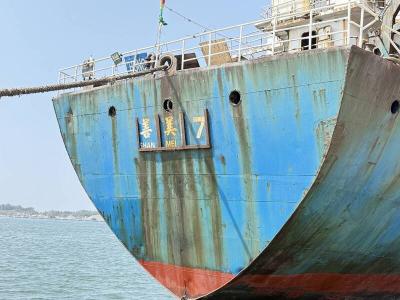The military on Wednesday held a landing exercise at Cisingtan (七星潭) in Hualien County, listing the beach as a potential landing site for an amphibious operation for the first time since 1989.
Cisingtan has been named as one of nearly 20 “red beaches,” or potential landing sites for the Chinese military.
The Ministry of National Defense has added about a dozen more potentially vulnerable coastal sites to the list since May.

Photo: Yu Tai-lang, Taipei Times
The beach in Sincheng Township (新城) near Taroko Gorge was added again after 34 years, likely as it is near Chiashan Air Base (佳山基地), a source said on condition of anonymity.
Cisingtan is considered a difficult landing site due to its terrain, requiring study to identify potential landing paths and defense strategies, they said.
At about 5am on Wednesday, a marine corp advance force was spotted off Cisingtan, along with a navy meteorological vessel deployed to study sea and weather conditions.

Photo: Yu Tai-lang, Taipei Times
Boundary markers were set up along the beach to guide three Assault Amphibious Vehicles (AAV-7) and 36 combat assault vehicles landing from a Chung Ho-class tank landing ship in three waves starting from 8am.
Before the exercise, four speedboats keeping guard drove away three fishing vessels that approached the restricted area.
The vehicles returned to the tank landing ship at the end of the 45-minute drill.

An undersea cable to Penghu County has been severed, the Ministry of Digital Affairs said today, with a Chinese-funded ship suspected of being responsible. It comes just a month after a Chinese ship was suspected of severing an undersea cable north of Keelung Harbor. The National Communications and Cyber Security Center received a report at 3:03am today from Chunghwa Telecom that the No. 3 cable from Taiwan to Penghu was severed 14.7km off the coast of Tainan, the Ministry of Digital Affairs said. The Coast Guard Administration (CGA) upon receiving a report from Chunghwa Telecom began to monitor the Togolese-flagged Hong Tai (宏泰)

EVA Air is prohibiting the use of portable chargers on board all flights starting from Saturday, while China Airlines is advising passengers not to use them, following the lead of South Korean airlines. Current regulations prohibit portable chargers and lithium batteries from check-in luggage and require them to be properly packed in carry-on baggage, EVA Air said. To improve onboard safety, portable chargers and spare lithium batteries would be prohibited from use on all fights starting on Saturday, it said. Passengers are advised to fully charge electronic devices before boarding and use the AC and USB charging outlets at their seat, it said. South

WAR SIMULATION: The developers of the board game ‘2045’ consulted experts and analysts, and made maps based on real-life Chinese People’s Liberation Army exercises To stop invading Chinese forces seizing Taiwan, board gamer Ruth Zhong chooses the nuclear option: Dropping an atomic bomb on Taipei to secure the nation’s freedom and her victory. The Taiwanese board game 2045 is a zero-sum contest of military strategy and individual self-interest that puts players on the front lines of a simulated Chinese attack. Their battlefield game tactics would determine the theoretical future of Taiwan, which in the real world faces the constant threat of a Chinese invasion. “The most interesting part of this game is that you have to make continuous decisions based on the evolving situation,

Actor Lee Wei (李威) was released on bail on Monday after being named as a suspect in the death of a woman whose body was found in the meeting place of a Buddhist group in Taipei’s Daan District (大安) last year, prosecutors said. Lee, 44, was released on NT$300,000 (US$9,148) bail, while his wife, surnamed Chien (簡), was released on NT$150,000 bail after both were summoned to give statements regarding the woman’s death. The home of Lee, who has retreated from the entertainment business in the past few years, was also searched by prosecutors and police earlier on Monday. Lee was questioned three